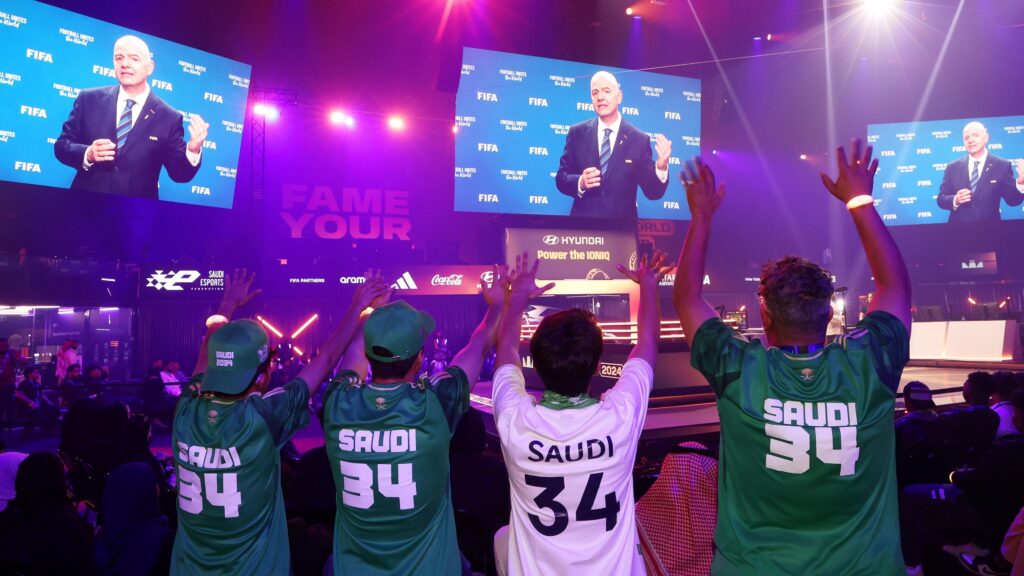The relationship between FIFA, the Club World Cup, and Saudi Arabia has become a topic of significant discussion, particularly in light of the enormous financial backing provided by the kingdom’s Public Investment Fund (PIF). As the tournament unfolds, Saudi Arabia’s involvement appears to underwrite a revamped Club World Cup, an event historically criticized for its lack of traction and relevance in the international football scene. The ramifications of this financial infusion are considerable, affecting not just player dynamics and league competitions, but also raising more profound questions regarding corporate governance in sports.
The upcoming Club World Cup will be hosted at Miami’s Hard Rock Stadium where major teams, including Real Madrid, are slated to compete. Real Madrid’s investment in acquiring Trent Alexander-Arnold from Liverpool for a substantial fee further underscores the monetary allure of this tournament. The prize pool, which totals a staggering $1 billion, gives participating European clubs the potential to earn a hefty £97 million should they emerge victorious. However, this financial structure has led to serious concerns about the potential distortion of competitive balance within domestic leagues.
Among the participating teams is Al-Hilal, a club owned by the Saudi PIF, which not only adds another layer of complexity but illustrates Saudi Arabia’s positioning as a formidable player in international football. The expansion from seven to 32 teams also raises eyebrows, drawing criticism from various stakeholders regarding how such growth can adversely impact player workload and the international football schedule.
Moreover, the broadcasting rights have been a significant point of interest, with DAZN agreeing to a landmark $1 billion deal with FIFA for global coverage, a move described as remarkable especially given the platform’s earlier financial losses. This partnership further cements Saudi Arabia’s influence, especially after reports surfaced regarding the PIF acquiring a minority stake in DAZN.
Saudi Arabia’s efforts to promote this Club World Cup coincide neatly with its recent designation as the host for the 2034 World Cup. Despite past controversies surrounding the kingdom’s human rights record, FIFA’s selection process for the upcoming World Cup raised eyebrows, primarily due to its rapid timeline and the limited chance for competitive bids—Australia was the only other country considered but opted out due to perceived futility. Critics argue that the selection process has lacked transparency, and the awarding of a high score in FIFA’s evaluation reports for the Saudi application feels predetermined.
On the other side of this narrative is FIFA President Gianni Infantino, who asserts that Saudi Arabia’s hosting of major football events could act as a transformative catalyst for social change within the kingdom. Yet skepticism lingers, as critics like Nicholas McGeehan from the Fair Square campaign group allege that such sponsorships only serve to obscure more troubling associations between money and influence in football governance.
The implications of these alliances stretch beyond immediate financial support; the investment can reshape the global football landscape, with Saudi Arabia aiming to cultivate itself as a significant player on the world football stage. Critics such as former FIFA President Sepp Blatter have spoken against the international calendar becoming congested due to the rise of events like the Club World Cup, suggesting that without Saudi investment, the tournament would struggle to take place.
As DAZN executives tout the potential for this Club World Cup to be the most streamed sports event ever, the business dynamics underpinning this relationship remain suspect. Some observers posit that this “marriage of convenience” has more to do with mutual benefits than a cohesive strategy for growth. Saudi Arabia’s financial backing here is seen as a more immediate solution to FIFA’s sponsorship woes rather than an integrated plan.
The broader implications of these developments could signal a transformative period for football, with growing scrutiny over player welfare, environmental concerns, and the ever-complicated relationship between sport and commerce. As this evolving landscape continues to unfold, the extent to which these financial ties will shape the future of football remains to be seen. The echo of concerns about sustainability and exploitation will likely resonate as the tournament progresses, with many stakeholders advocating for a model of governance that promotes transparency and equitable competition.



